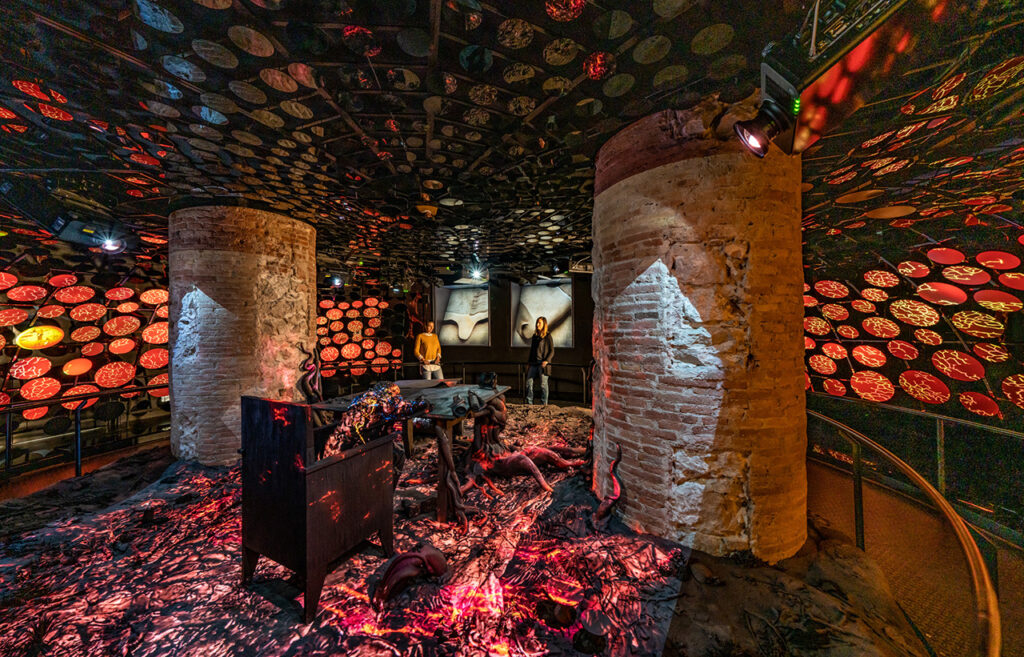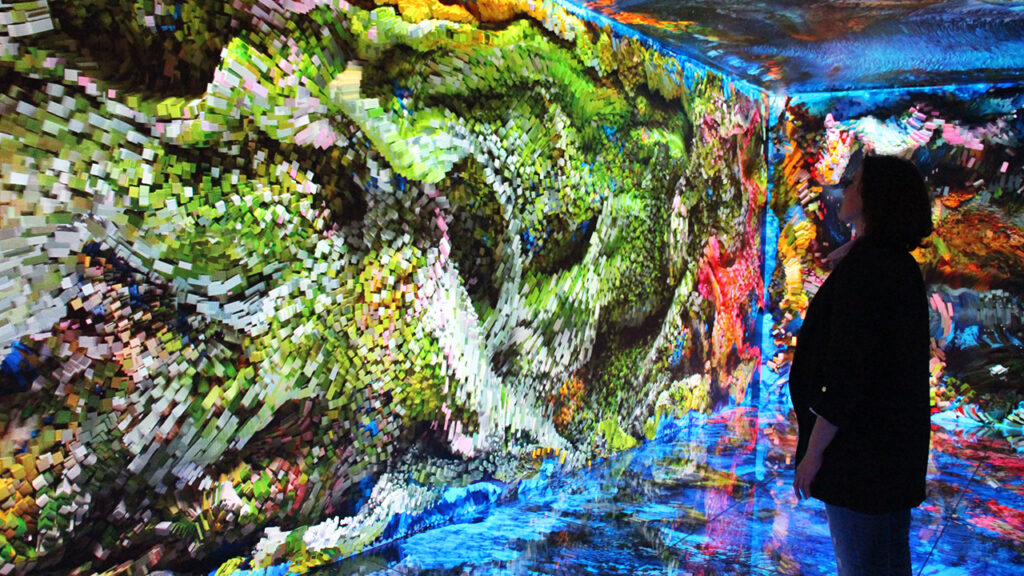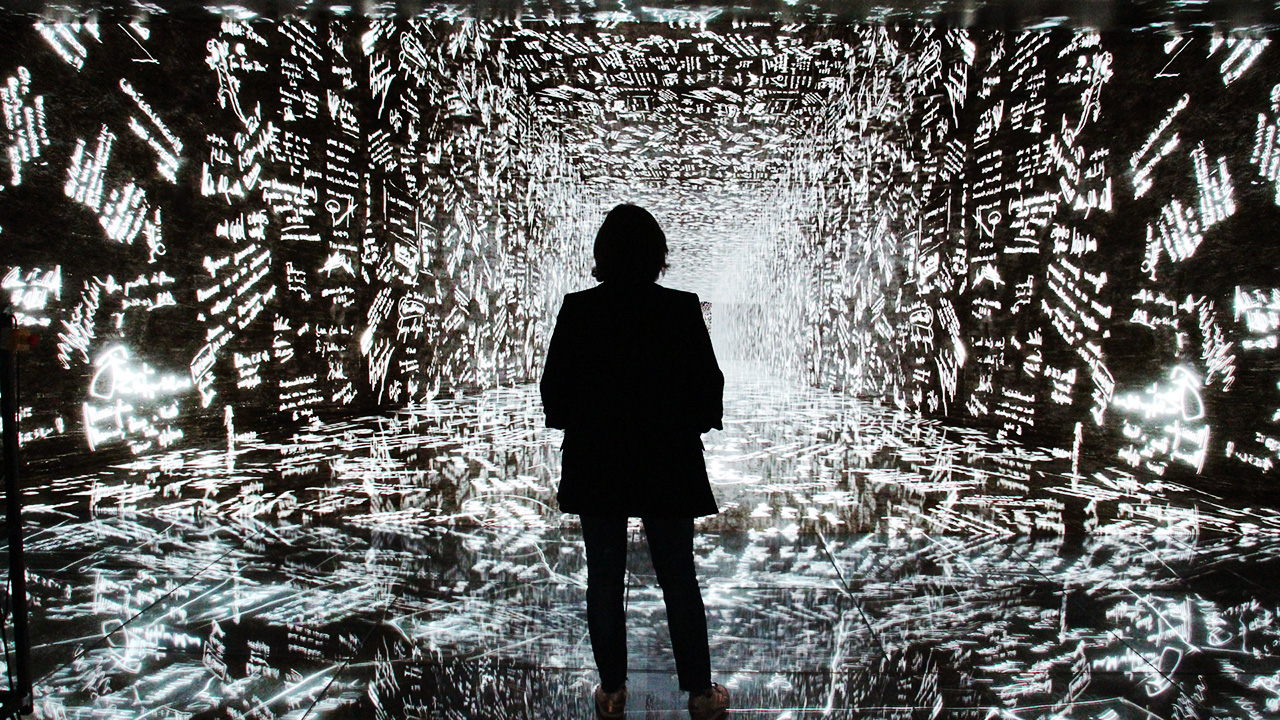When Casa Batlló reopened to the public in May, it did so with aplomb. Upon completion in the early 1900s, the house Gaudí designed for a local textile industrialist was visionary, a singular fairytale interpretation of art nouveau. By the 2010s, it was in need of revitalization.
Beyond faithfully restoring the house to its former glory, Casa Batlló has undergone a digital transformation, one utilizing the full complement of tools popular in the art-tech space. This includes artificial intelligence (AI), machine learning, augmented reality, 3D sound, olfactory interventions, and more. The result is the transformation of one of Barcelona’s most popular attractions into a veritable immersive journey, one the team behind it terms the world’s first 10D experience.
What’s a 10D experience?

The Gaudí Dome, designed by Miguel Alonso, features 1,000 circular screens projected with organic shapes and graphics that inspired the architect’s work. Image: Casa Batlló
Something of a poetic flourish on the part of Casa Batlló. Beginning with the five human senses, it arrives at the number 10 through the addition of five sensory features, namely 3D sound, olfactory interventions, the ability of visitors to touch elements of the house, the rotating platform and wind effects integrated into the Gaudí Dome, and a 3D virtual reality experience.
What’s behind the digital makeover?
Casa Batlló wants to become Barcelona’s most entertaining cultural attraction. Having opened to the public in 2002, the owners felt it was in need of renovation and decided to future-proof the site by integrating immersive digital art elements — think teamLab, Van Gogh immersive experiences, or Miami’s Superblue. “The new staging of Casa Batlló is intended to preserve the cultural heritage,” Casa Batlló’s team tells Jing Culture & Commerce, “and renew its narrative by betting on new technologies with the same innovative and disruptive spirit that characterized Antoni Gaudí.”
Gaudí Dome
The converted coal cellars stage an immersive space comprised of more than a thousand circular screens and dozens of projectors. It’s courtesy of an installation from artist Miguel Alonso who created a rotating platform from which visitors peer up at the dome. The focus is Gaudí’s creative origins, images from his childhood, the inspiration of nature brought to life with movement, smell, and surround sound.
Gaudí Cube

Created by Refik Anadol with visuals powered by machine learning, the Gaudí Cube aims to envelope viewers “in the mind of Gaudí.” Image: Casa Batlló
Offered as the world’s first six-sided LED cube, the work by Turkish-American artist Refik Anadol promises to take the visitor inside the mind of Gaudí. This is achieved by deploying AI to a multitude of images, videos, models, and drawings related to Gaudí’s creative endeavors.
Audio guide upgrades
Casa Batlló applied equal technological rigor to upgrading its sonic experience. Most basically, the audio guide is now available in 15 languages. More impressive are the “no touch” smart headphones themselves, developed alongside software company Coregrid, which adapt to the visitor’s rhythm offering a personalized experience. The accompanying soundtrack was performed by members of the Berlin Philharmonic, Berlin Radio Symphony Orchestra and Deutsche Oper Berlin.



